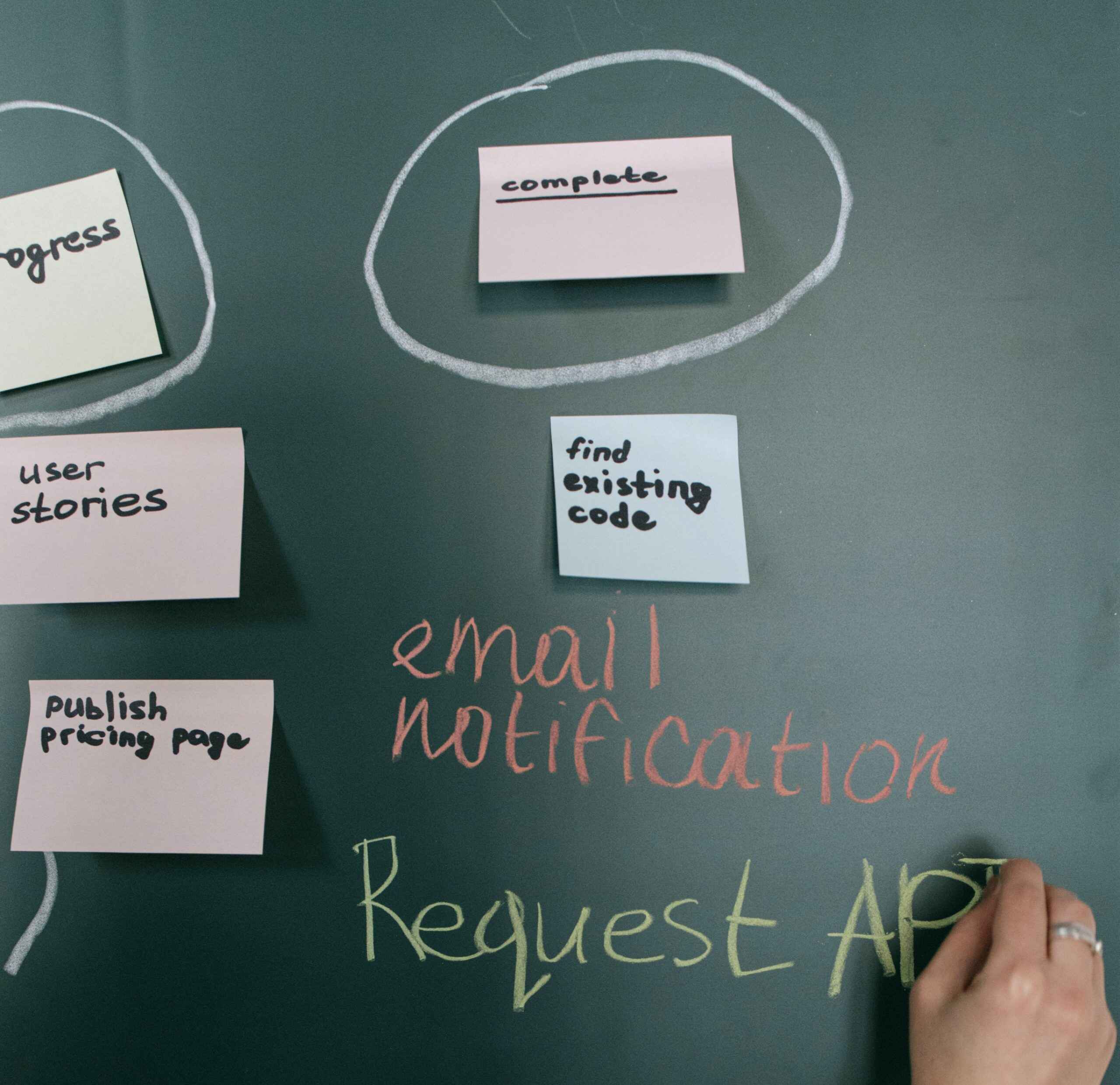E-commerce has revolutionized the way businesses operate, and mobile apps have played a significant role in enhancing the reach and accessibility of online stores. Developing a mobile app for e-commerce can be a complex process, but with the right guidance and expertise, it can be a game-changer for your business. In this step-by-step guide, we will walk you through the process of developing a mobile app for e-commerce, providing valuable insights and best practices along the way.
The Basics of E-Commerce Mobile App Development
Before diving into the development process, it’s essential to understand why mobile apps are crucial for e-commerce businesses. Mobile apps offer a personalized and seamless shopping experience, allowing customers to browse products, make purchases, and track orders on the go. They also enable businesses to engage with customers through push notifications, loyalty programs, and personalized offers. So, if you’re looking to enhance customer satisfaction, increase sales, and stay ahead of the competition, a mobile app is a must.
Mobile Apps Importance in E-Commerce
Mobile apps have become an integral part of the e-commerce landscape. They provide users with a convenient and user-friendly platform, making it easier for them to shop. From our experience at WeSoftYou, we’ve witnessed the immense benefits that mobile apps bring to businesses. They help in boosting customer loyalty, improving brand visibility, and driving customer engagement.
One of the key advantages of mobile apps in e-commerce is the ability to offer a personalized shopping experience. With mobile apps, businesses can collect data on customer preferences, purchase history, and browsing behavior. This data can then be used to provide tailored recommendations and personalized offers, increasing the chances of making a sale. Additionally, mobile apps allow businesses to send push notifications to customers, alerting them about new products, discounts, and promotions. This direct communication channel helps in keeping customers engaged and informed, ultimately leading to higher sales.
Another important aspect of mobile apps in e-commerce is the convenience they offer to customers. With a mobile app, customers can shop anytime and anywhere, without the need for a desktop computer or a physical store visit. This flexibility is especially beneficial for busy individuals who are always on the go. By providing a seamless and convenient shopping experience, businesses can attract and retain more customers, ultimately leading to increased revenue.
Key Features of Successful E-Commerce Apps
A successful e-commerce app incorporates several key features to enhance the shopping experience. These features include user-friendly navigation, intuitive search functionality, secure payment gateways, personalized recommendations, social sharing options, and seamless integration with other platforms such as social media and CRM systems. By incorporating these features, you can provide your customers with a seamless shopping experience and differentiate your app from competitors.
User-friendly navigation is crucial in ensuring that customers can easily find what they are looking for. A well-designed app should have clear categories, filters, and sorting options to help users navigate through the product catalog effortlessly. Additionally, an intuitive search functionality allows customers to quickly find specific products by entering keywords or using filters.
Secure payment gateways are essential to instill trust and confidence in customers. A successful e-commerce app should support popular payment methods and ensure that all transactions are encrypted and secure. By providing a safe and seamless payment experience, businesses can encourage customers to make purchases without any hesitation.
Personalized recommendations are another key feature that can significantly enhance the shopping experience. By analyzing customer data and behavior, businesses can offer product recommendations that are tailored to each individual’s preferences. This not only helps customers discover new products but also increases the chances of making a sale.
Social sharing options allow customers to share their purchases and experiences with their friends and followers on social media platforms. This not only helps in increasing brand visibility but also acts as a form of free advertising. By integrating social sharing options into your e-commerce app, you can leverage the power of social media to reach a wider audience and attract new customers.
Seamless integration with other platforms such as social media and CRM systems is essential for businesses to streamline their operations and provide a cohesive customer experience. By integrating your e-commerce app with social media platforms, you can leverage social media marketing strategies and engage with customers on multiple channels. Integration with CRM systems allows businesses to track customer interactions, manage customer data, and provide personalized customer support.
In conclusion, mobile apps have become an indispensable tool for e-commerce businesses. They offer a personalized and convenient shopping experience, boost customer loyalty, and drive engagement. By incorporating key features such as user-friendly navigation, secure payment gateways, personalized recommendations, and seamless integration with other platforms, businesses can create successful e-commerce apps that stand out from the competition.
Plan Your E-Commerce Mobile App
Planning is a critical phase in the development of any mobile app, especially for e-commerce. It involves defining your target audience, setting clear objectives, and outlining the key functionalities of your app.
When it comes to developing an e-commerce mobile app, one of the most important aspects is understanding your target audience. Conducting thorough market research is essential to gain insights into your customers’ preferences, demographics, and buying behavior. By understanding your target audience, you can tailor your app to meet their specific needs and expectations.
Market research provides valuable information about your customers’ preferences, such as their preferred payment methods, delivery options, and product categories. Armed with this knowledge, you can design an app that offers a seamless and personalized shopping experience. For example, if your research shows that your target audience prefers to pay using digital wallets, you can integrate popular payment gateways like Apple Pay or Google Pay into your app.
Set Clear Objectives for Your App
Before initiating the development process, it’s essential to define clear objectives for your app. Are you aiming to increase sales, improve customer engagement, or expand your customer base? Establishing measurable goals will enable you to track the success of your app and make data-driven decisions throughout the development and marketing phases.
Increasing sales is a common objective for e-commerce mobile apps. To achieve this, you can incorporate features like personalized recommendations, limited-time offers, and a simplified checkout process. These features can help drive conversions and encourage repeat purchases.
Improving customer engagement is another crucial objective for e-commerce apps. By offering interactive features such as product reviews, ratings, and social sharing options, you can encourage customers to actively engage with your app and share their experiences with others. This can help build a loyal customer base and attract new customers through word-of-mouth marketing.
Expanding your customer base is a long-term goal that requires strategic planning. To attract new customers, you can consider implementing referral programs, partnering with influencers or bloggers, and optimizing your app for search engines. These tactics can help increase your app’s visibility and reach a wider audience.
Overall, planning your e-commerce mobile app involves a deep understanding of your target audience and clear objectives. By investing time and effort into the planning phase, you can lay a solid foundation for the development process and increase the chances of creating a successful app.
Design Your E-Commerce Mobile App
The design of your e-commerce mobile app plays a crucial role in attracting and retaining customers. From the user interface to the user experience, every aspect of the design should be optimized to provide a delightful and seamless shopping experience.

When it comes to designing your e-commerce mobile app, there are several key principles to keep in mind. One of the most important is the user interface (UI), which refers to the visual elements and layout of your app. A user-friendly interface and smooth navigation are essential for keeping your customers engaged and encouraging them to make purchases. This means incorporating clear call-to-action buttons, easy-to-read product descriptions, and intuitive design elements that guide users through the shopping process.
But it’s not just about the visual appeal of your app. The user experience (UX) is equally important. UX focuses on how users interact with your app and the overall experience they have while using it. By incorporating user experience principles, such as intuitive navigation and responsive design, you can ensure a seamless experience across different devices and platforms. This means designing your app to be mobile-friendly, with features like adaptive layouts and touch-friendly controls that make it easy for users to browse and buy products on their smartphones or tablets.
User Interface and User Experience Principles
A user-friendly interface and smooth navigation are essential for keeping your customers engaged and encourage them to make purchases. From clear call-to-action buttons to easy-to-read product descriptions, your app’s design should prioritize simplicity and ease of use. By incorporating user experience principles, such as intuitive navigation and responsive design, you can ensure a seamless experience across different devices and platforms.
One important aspect of UI and UX design is the use of visual hierarchy. This involves organizing the elements on your app’s interface in a way that guides users’ attention and helps them understand the information presented. By using techniques like size, color, and placement, you can highlight important elements, such as product images or pricing, and make it easier for users to find what they’re looking for.
Another crucial principle is consistency. Consistency in design elements, such as colors, fonts, and button styles, helps create a sense of familiarity and builds trust with your users. When your app’s design is consistent, users can easily navigate through different sections and understand how to interact with various elements. This consistency also extends to the overall branding of your app, ensuring that it aligns with your company’s visual identity and reinforces your brand image.
Design for Different Mobile Platforms
With multiple mobile platforms available, it’s crucial to design your e-commerce app to cater to different operating systems and devices. Whether it’s iOS, Android, or other platforms, your app should be optimized for each platform, ensuring consistent performance and user experience.
Each mobile platform has its own design guidelines and best practices that you should follow to create a seamless experience for users. For example, iOS apps typically follow Apple’s Human Interface Guidelines, which emphasize simplicity, clarity, and depth. On the other hand, Android apps adhere to Material Design principles, which focus on bold colors, responsive animations, and intuitive interactions.
When designing for different mobile platforms, it’s important to consider the unique capabilities and limitations of each. For example, iOS devices have specific screen sizes and aspect ratios that you need to take into account, while Android devices come in a wide range of screen sizes and resolutions. By designing your app to be responsive and adaptive, you can ensure that it looks and performs well on any device, regardless of the platform.
In conclusion, designing an e-commerce mobile app requires careful consideration of both the user interface and user experience. By prioritizing simplicity, ease of use, and consistency, you can create an app that attracts and retains customers. Additionally, optimizing your app for different mobile platforms ensures that it performs well and provides a seamless experience across various devices. So, take the time to plan and design your e-commerce mobile app thoughtfully, and watch as it becomes a valuable tool for your business.
Develop Your E-Commerce Mobile App
Once you have a clear plan and design in place, it’s time to dive into the development process. Choosing the right development tools and implementing essential e-commerce features are crucial for creating a robust and successful app for your business.
Developing a mobile app for your e-commerce business is an exciting endeavor. It opens up new opportunities for growth and allows you to reach a wider audience. However, it’s important to approach the development process strategically and make informed decisions.
Choose the Right Development Tools
There are numerous development tools and frameworks available for building mobile apps, each with its own set of advantages and limitations. From our experience, we recommend selecting tools that offer scalability, flexibility, and ease of integration with existing systems. Popular choices include React Native, Flutter, and Xamarin.
React Native is a widely-used framework that allows you to build cross-platform apps using JavaScript. It offers a rich set of pre-built components and allows for seamless integration with existing codebases. Flutter, on the other hand, is a UI toolkit developed by Google that enables you to create visually stunning apps with a single codebase. Xamarin, powered by Microsoft, allows you to build native apps using C# and .NET framework.
When choosing the right development tools, it’s important to consider factors such as your team’s expertise, project requirements, and long-term scalability. By selecting the right tools, you can ensure a smooth development process and a high-quality end product.
Build Essential E-Commerce Features
When developing an e-commerce app, it’s essential to focus on features that streamline the shopping experience for your customers. These include secure payment gateways, product catalogs, shopping cart functionality, order tracking, and customer support integration. By prioritizing these features, you can ensure customer satisfaction and drive repeat purchases.
Implementing secure payment gateways is crucial to protect your customers’ financial information. It’s important to integrate with trusted payment providers, such as PayPal or Stripe, to offer a seamless and secure checkout process. Additionally, having a well-organized product catalog with detailed descriptions, high-quality images, and user reviews can help customers make informed purchasing decisions.
Shopping cart functionality is another essential feature that allows customers to add items to their cart and proceed to checkout. It’s important to make the cart easily accessible and provide clear information about the total cost, including any applicable taxes or shipping fees. Order tracking is also crucial, as it allows customers to monitor the progress of their purchases and provides transparency throughout the delivery process.
Lastly, integrating customer support features, such as live chat or a help center, can greatly enhance the overall shopping experience. This allows customers to easily reach out for assistance or resolve any issues they may encounter during their shopping journey.
By focusing on these essential e-commerce features, you can create a mobile app that not only meets your customers’ needs but also sets your business apart from the competition. Remember to continuously gather feedback from your users and iterate on your app to ensure it remains relevant and user-friendly.
Test Your E-Commerce Mobile App
After the development phase, it is crucial to thoroughly test your app to identify and fix any bugs or issues. Quality assurance plays a vital role in ensuring a seamless and error-free app that meets customer expectations.
Importance of Quality Assurance in App Development
Quality assurance is a crucial step that helps identify any functional or usability issues in your mobile app. Testing your app across different devices, screen sizes, and operating systems ensures a consistent and user-friendly experience for all users. It’s essential to invest time and resources into quality assurance to minimize the risk of negative user experiences and customer churn.
Types of Testing for Mobile Apps
There are several testing methodologies for mobile apps, including functional testing, usability testing, performance testing, and security testing. Each type of testing focuses on different aspects of your app’s functionality and helps ensure that your app delivers a seamless and secure experience to your customers.
Launch and Marketing Your E-Commerce Mobile App
Launching your e-commerce mobile app successfully involves careful planning and effective marketing strategies. From preparing for app store submissions to implementing marketing campaigns, the launch phase is crucial for generating initial user interest and attracting downloads.
Prepare for App Store Submission
Before submitting your app to app stores, ensure that it meets the guidelines and requirements set by the respective platforms. Pay attention to details such as app metadata, screenshots, and descriptions to optimize discoverability and attract potential users.
Effective Mobile App Marketing Strategies
Implementing effective marketing strategies is essential for driving app downloads and increasing user engagement. From social media promotions to influencer collaborations, there are various marketing channels and tactics to explore. It’s important to identify the most relevant platforms and tailor your marketing efforts to reach your target audience.
Maintain and Update Your E-Commerce Mobile App
Launching your app is just the beginning. To stay competitive and relevant in the rapidly evolving mobile landscape, it’s crucial to regularly maintain and update your e-commerce mobile app.
Importance of Regular App Updates
Regular updates are crucial to fix bugs, enhance performance, and introduce new features or improvements based on user feedback. By keeping your app up to date, you can ensure a positive user experience and maintain customer satisfaction.
Respond to User Feedback and Reviews
User feedback and reviews are valuable sources of insights that can help you identify areas for improvement and address customer concerns. Engaging with your users and promptly responding to their feedback not only shows that you care about their experience but also enables you to build loyalty and trust.
Developing a mobile app for e-commerce requires careful planning, attention to detail, and the right expertise. At WeSoftYou, we have a proven track record in software development, including mobile app development for various industries. If you’re looking to develop an e-commerce mobile app or need assistance with any other software development needs, feel free to contact us for a free consultation or project estimation. We would be more than happy to discuss your requirements and provide you with the best possible solutions.
FAQ
The timeline for developing a mobile app for e-commerce can vary depending on various factors such as app complexity, required features, and the development team’s size and expertise. As a general guideline, it can take anywhere from a few weeks to several months to develop a robust and fully functional e-commerce app.
The cost of developing an e-commerce mobile app can vary based on several factors, including app complexity, features, design requirements, and the development team’s rates. It is best to discuss your specific requirements with a software development company like WeSoftYou to get a more accurate cost estimation for your project.
If you’re ready to take your e-commerce business to the next level with a mobile app, contact us today for a free consultation or project estimation. Our team at WeSoftYou is here to support you in developing a robust and successful e-commerce mobile app tailored to your specific needs and business objectives.





















